A Leeds and Thousand Islands Archives Facebook (LTI Archives) post a few weeks back caught the attention of Editor Susan W. Smith, and we agreed to share some more pictures of the construction of “the bridge” over The River. "The Bridge” is simply the Thousand Islands Bridge, which connects the Canadian and US mainlands across the St. Lawrence River.
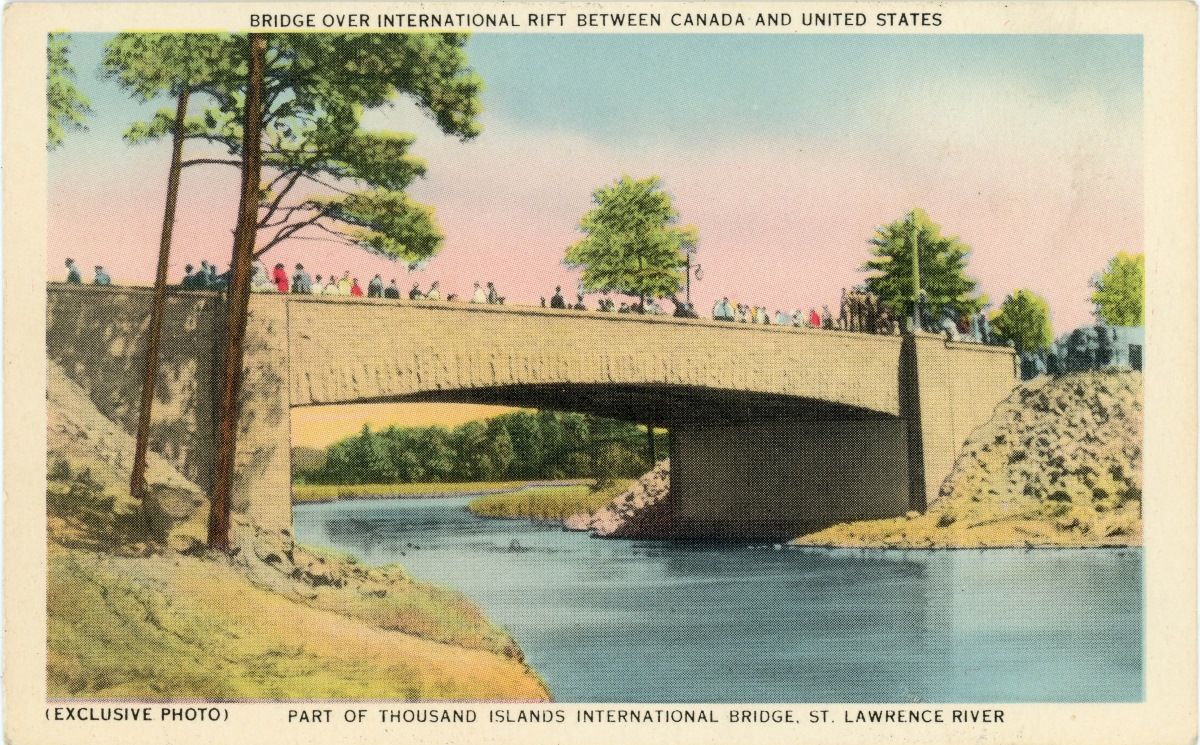
Many people and interests campaigned for years before the project was realized in 1937-8. It’s a system of six bridges stretching over a 12 kilometre route. This story is from the Canadian perspective, so we start with a suspension bridge, then a steel arch span, a Warren truss span, two granite-faced concrete bridges (the second built in 1959) over the rift and border line, and after a pleasant 6.5 km highway drive across Wellesley Island, the final span, the U.S. suspension bridge.
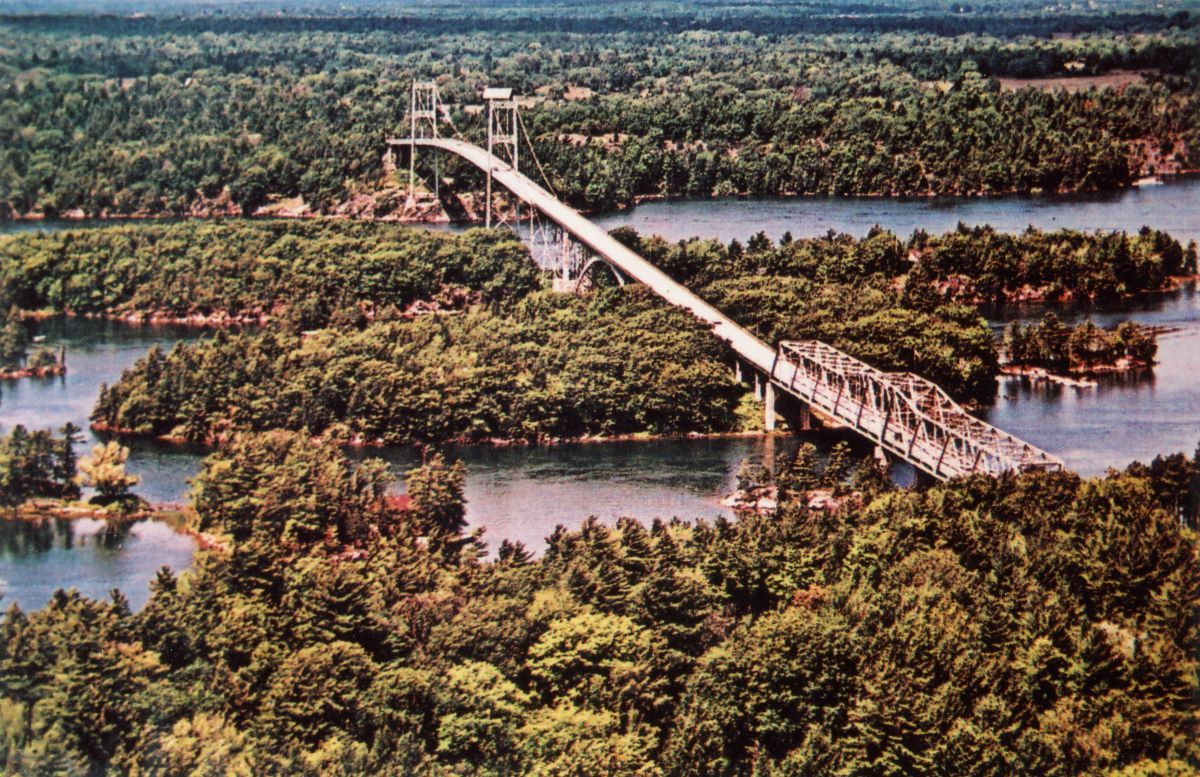
In 1933, the Thousand Island Bridge Company was formed in Canada but it was forced to sell its interests to the TI Bridge Authority as part of the two governments’ approval process. Part of the iconic beauty of our area, for a couple of years the bridge was central to the lives of those who built it and the locals who watched.
A search of the Archives’ on-line catalogue using “bridge” or Thousand Island Bridge” shows images and documents located in about a dozen places in our collection. Archives are organized by acquisition date. Items donated by a family, rescued from a building being demolished, found in landfill, purchased at an antique store or a garage sale, or official records of companies, foundations and government organizations have all found their way to us.
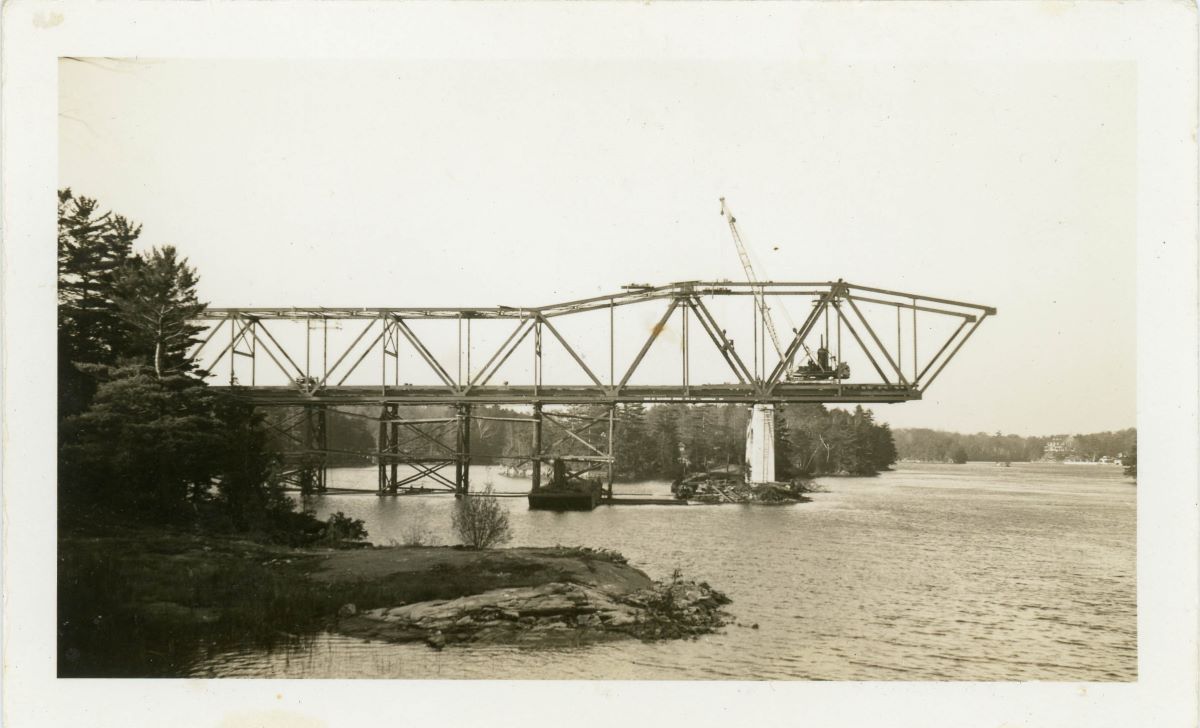
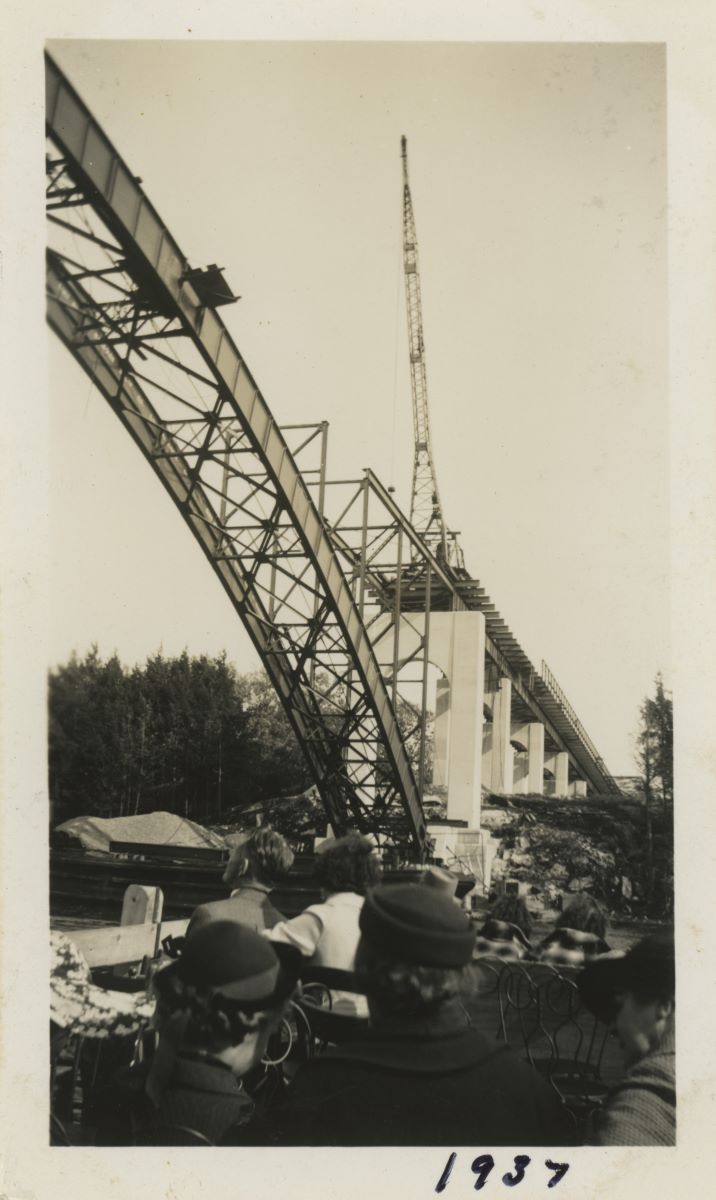
If the material originates in or has relevance to our township then we want it. Cataloguing involves organizing and describing the items, in some cases physically preserving them, and then storing them in boxes that are given a numbered shelf space. The acquisition is named for the donor or the subject and assigned a number, i.e. 2024-001 [year donated-first donation that year].
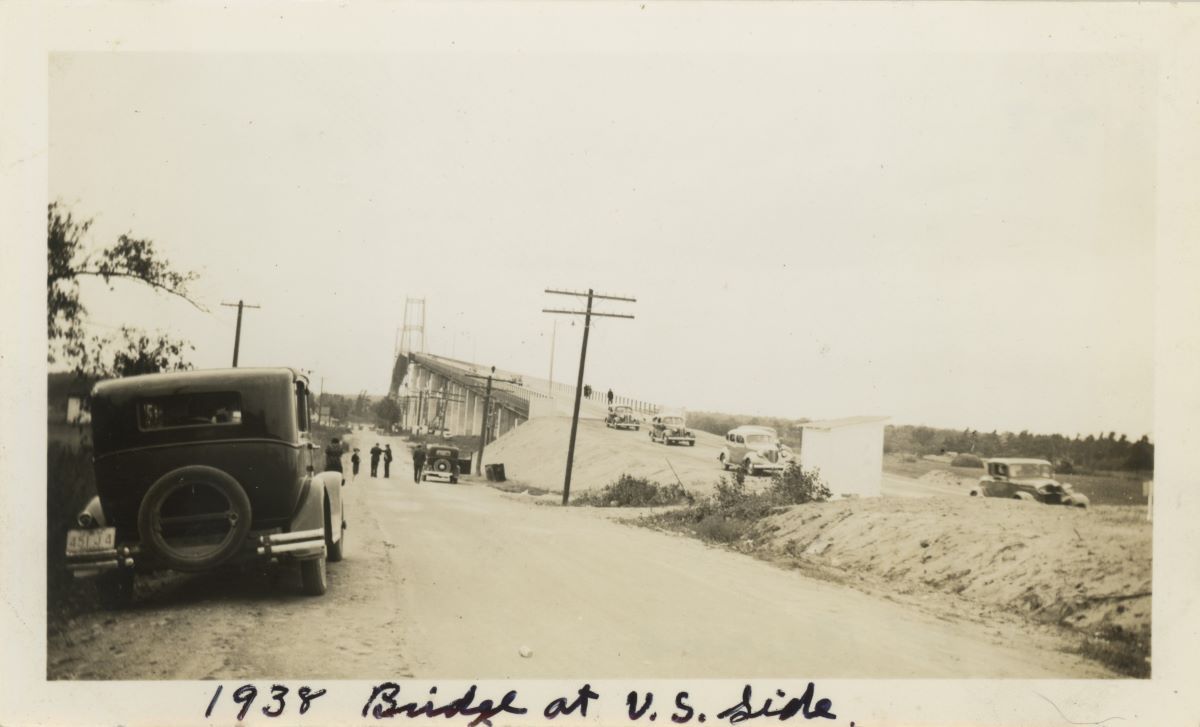
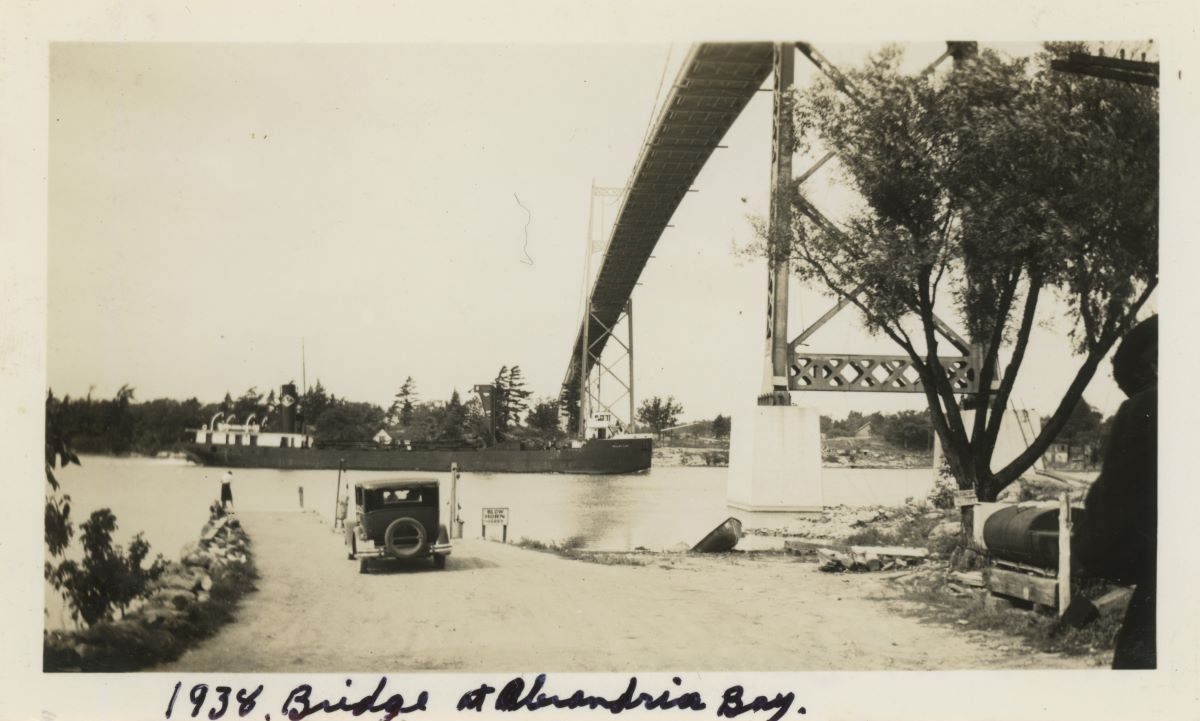
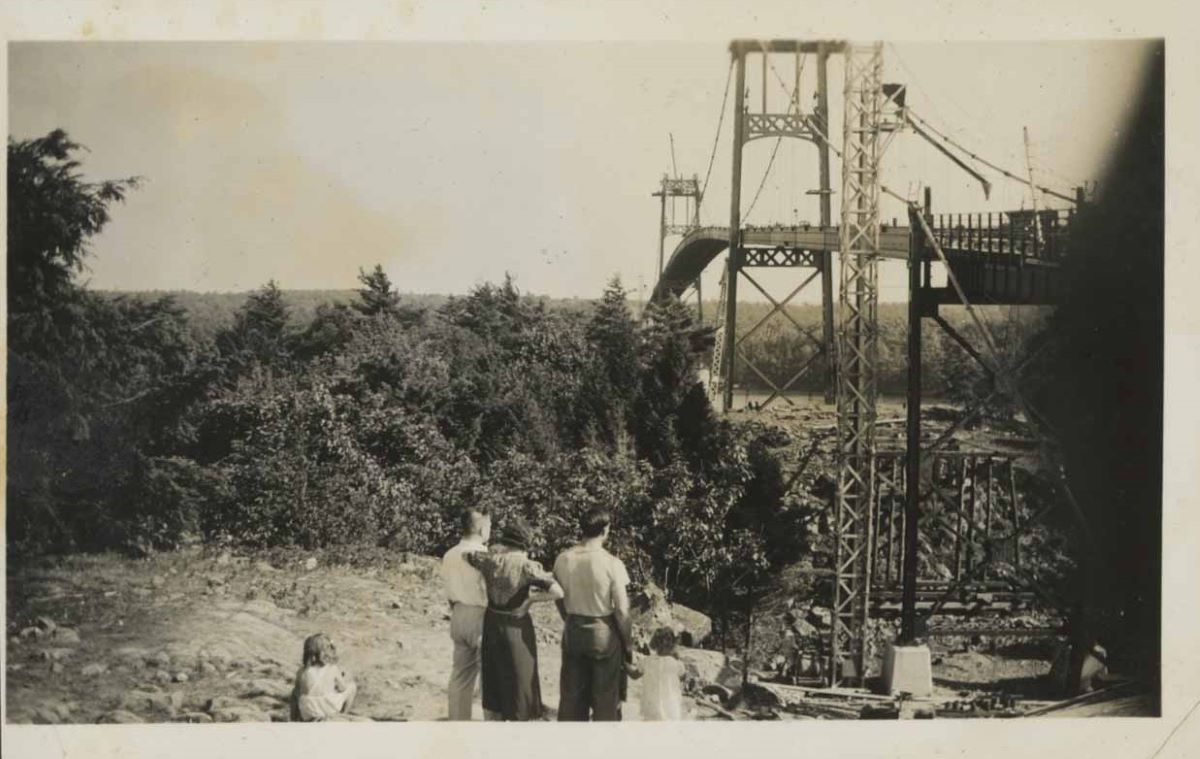
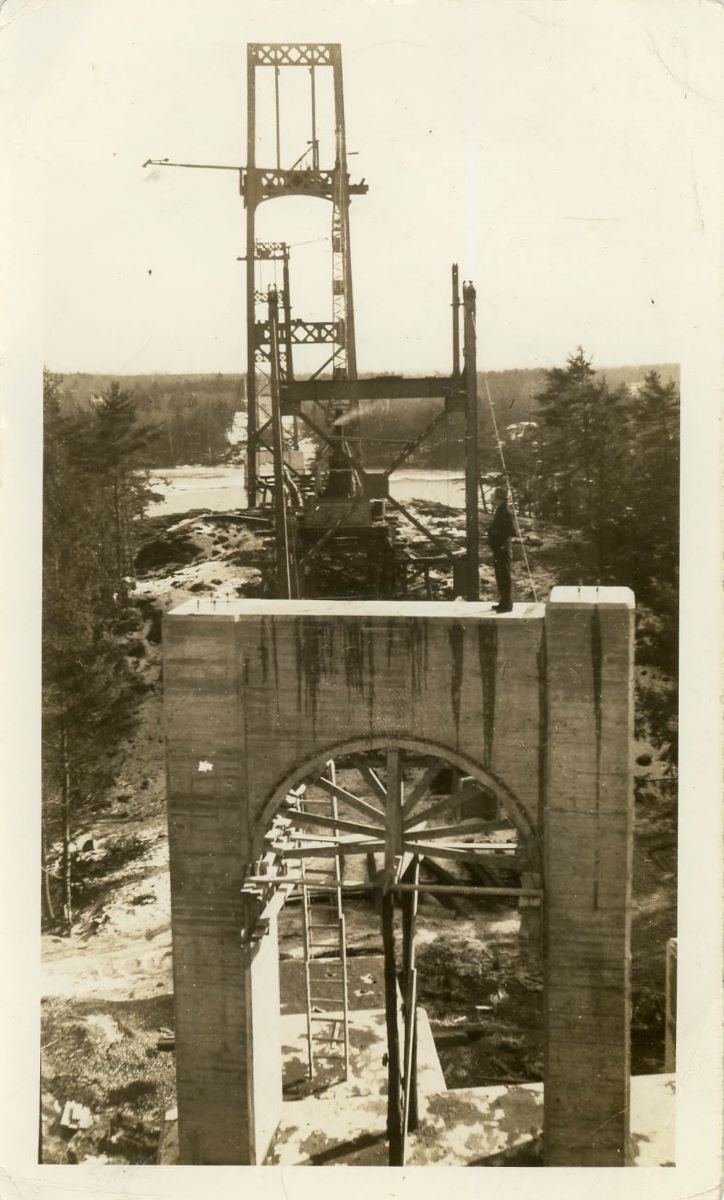
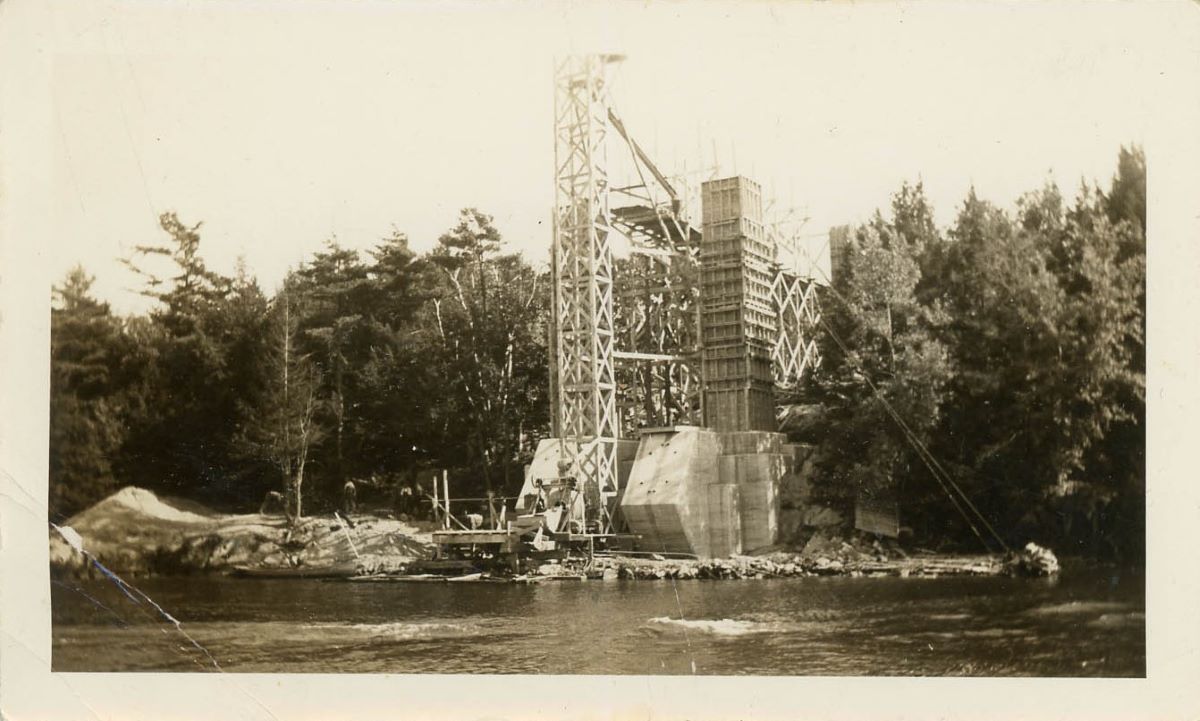
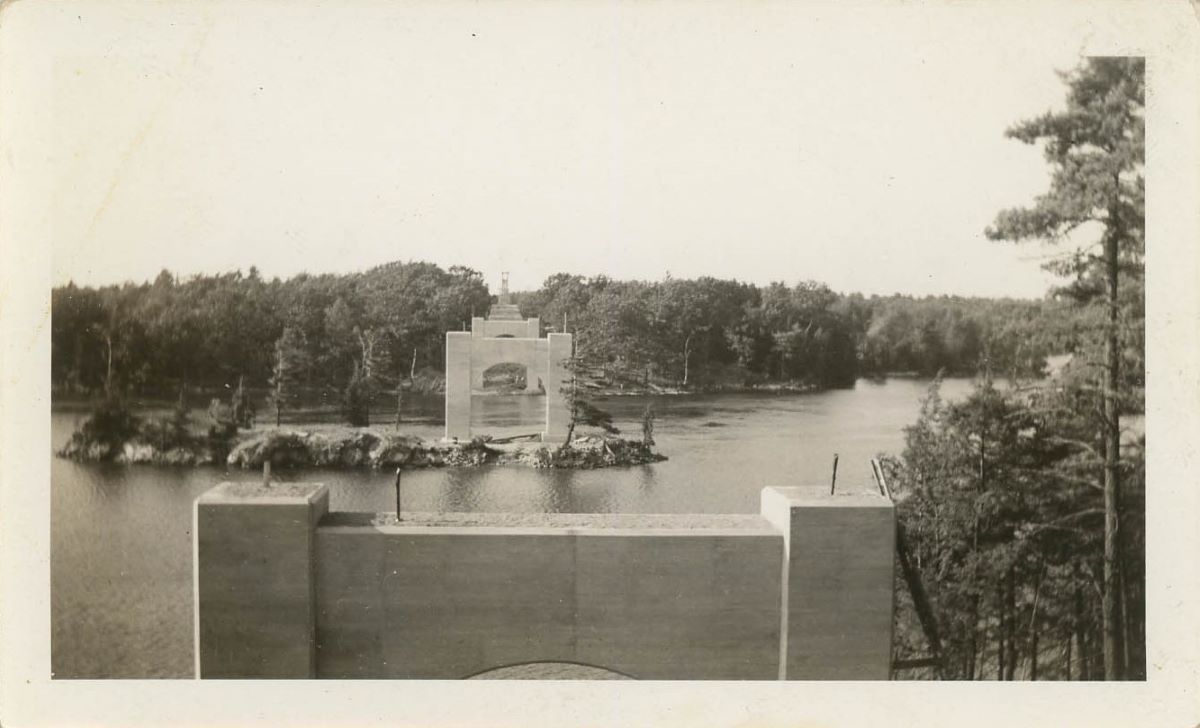
The Leeds and Thousand Islands Archives is administered by the township’s library system, and holds documents, images, and artifacts jointly owned by the township’s Municipal Heritage Committee and the LTI Historical Society (founded in 1991). Five volunteers currently work in a 60-foot rental trailer, awaiting the restoration of their previous home in the township-owned 1871 Escott Hall.
The Township of Leeds and Thousand Islands is year-round home to 9,500 people and includes the communities of Ivy Lea, Rockport, Lansdowne, Seeley’s Bay, and Lyndhurst. Most of Charleston Lake is inside it, along with the majority of the Canadian Thousand Islands from the Admiralty group in the west to Grenadier Island in the east.
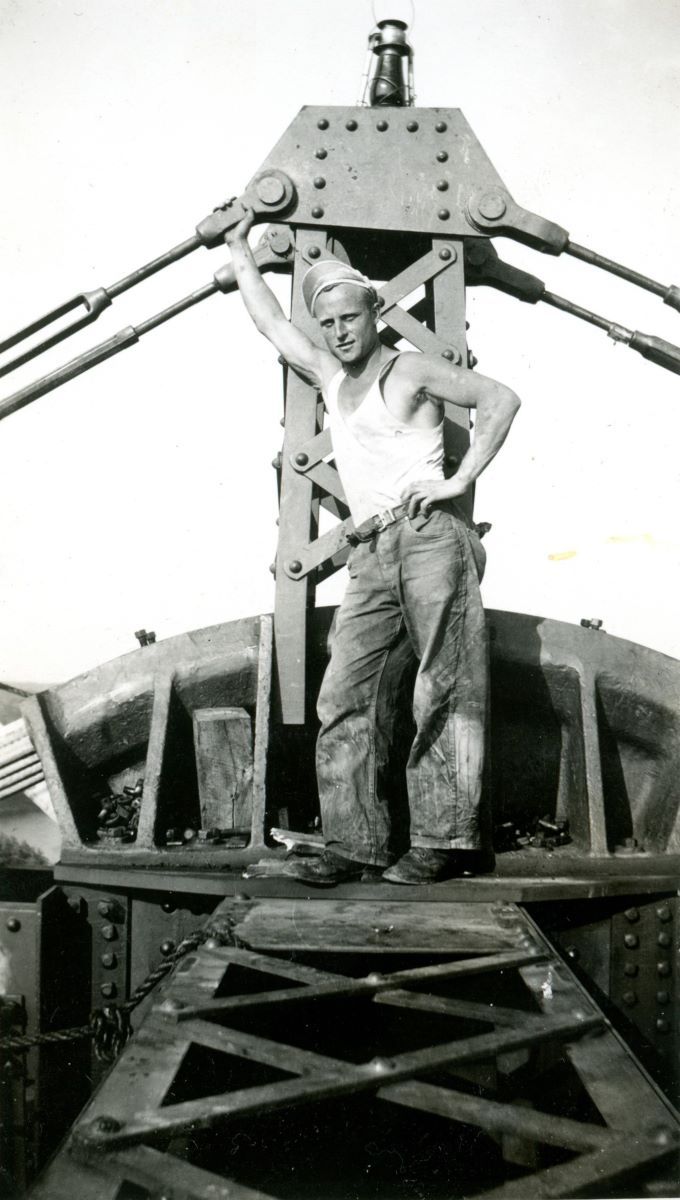
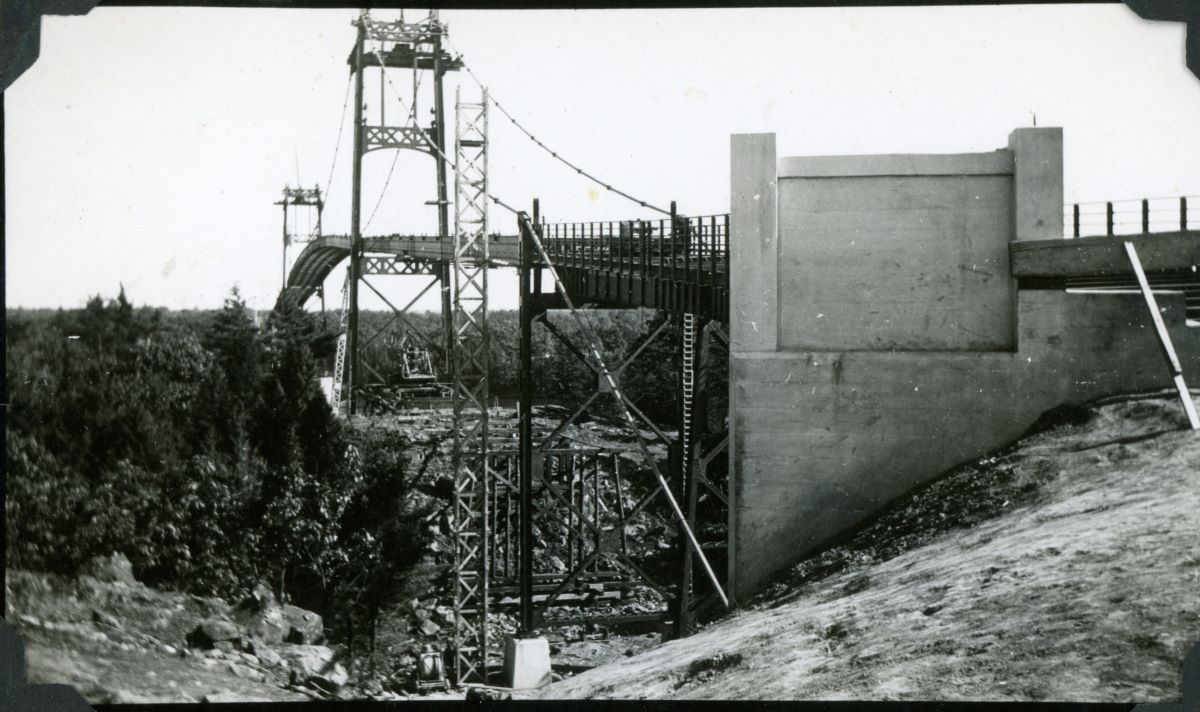
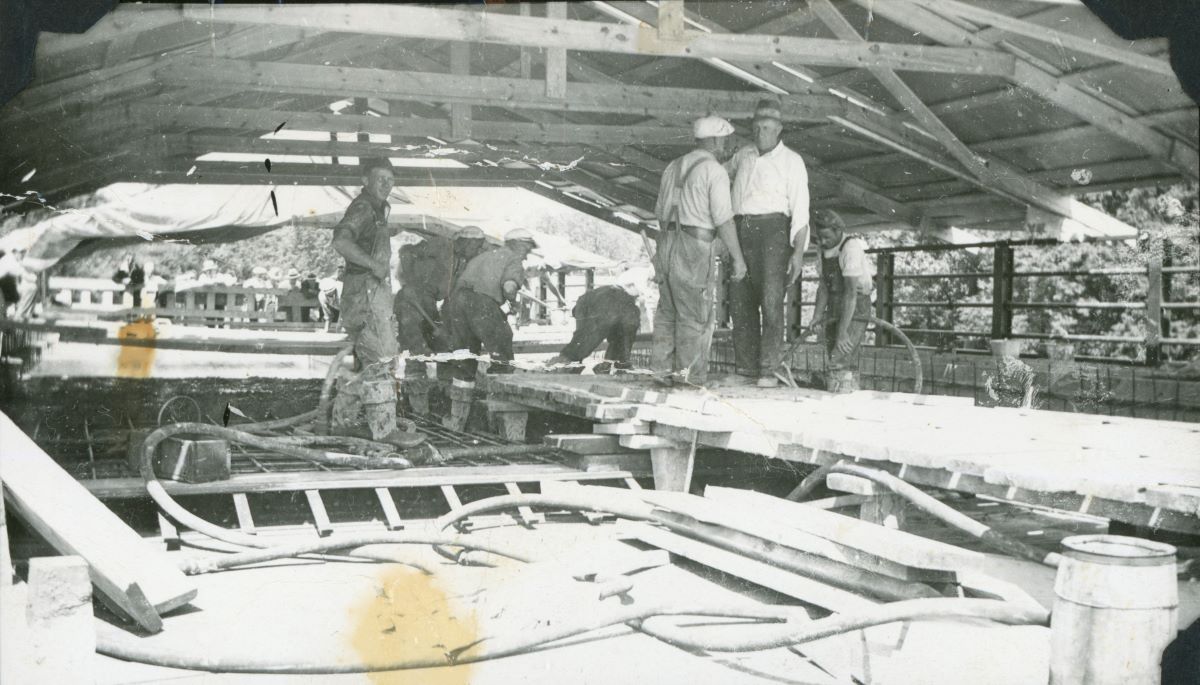
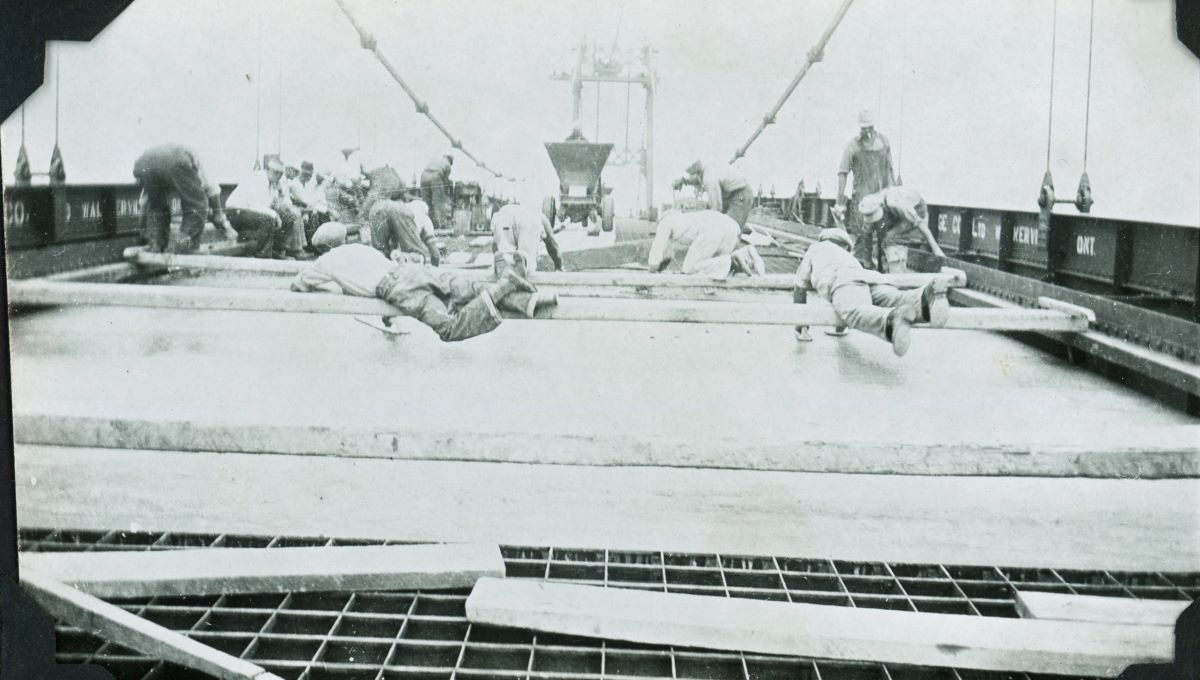
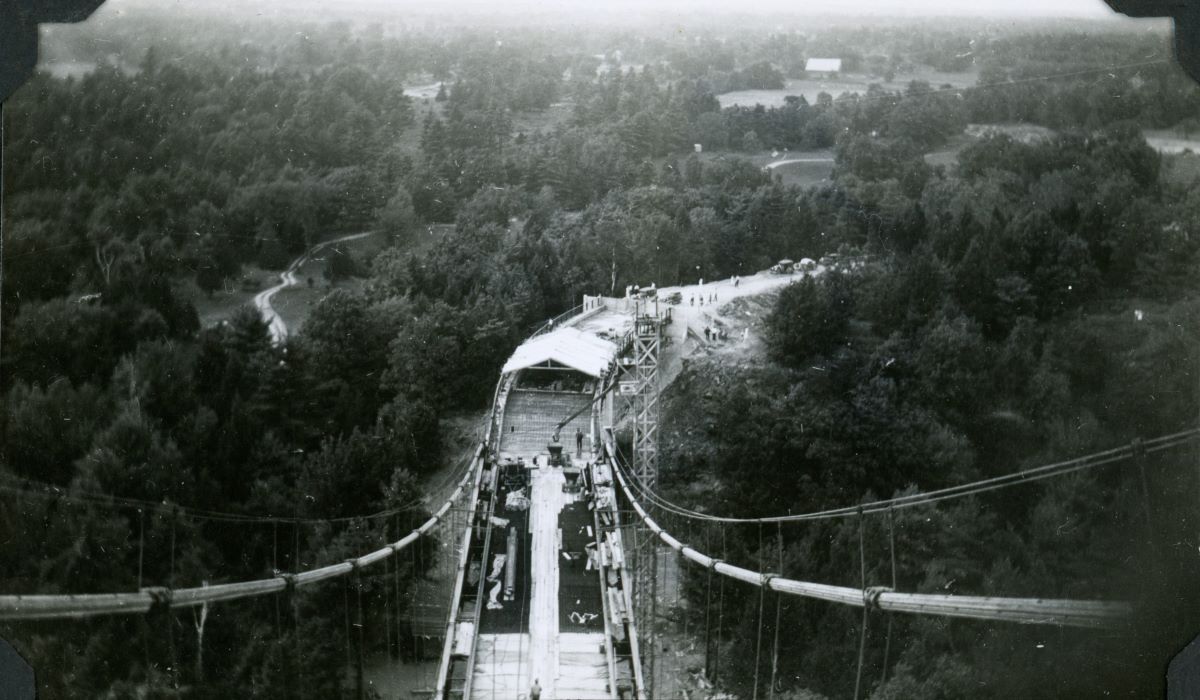
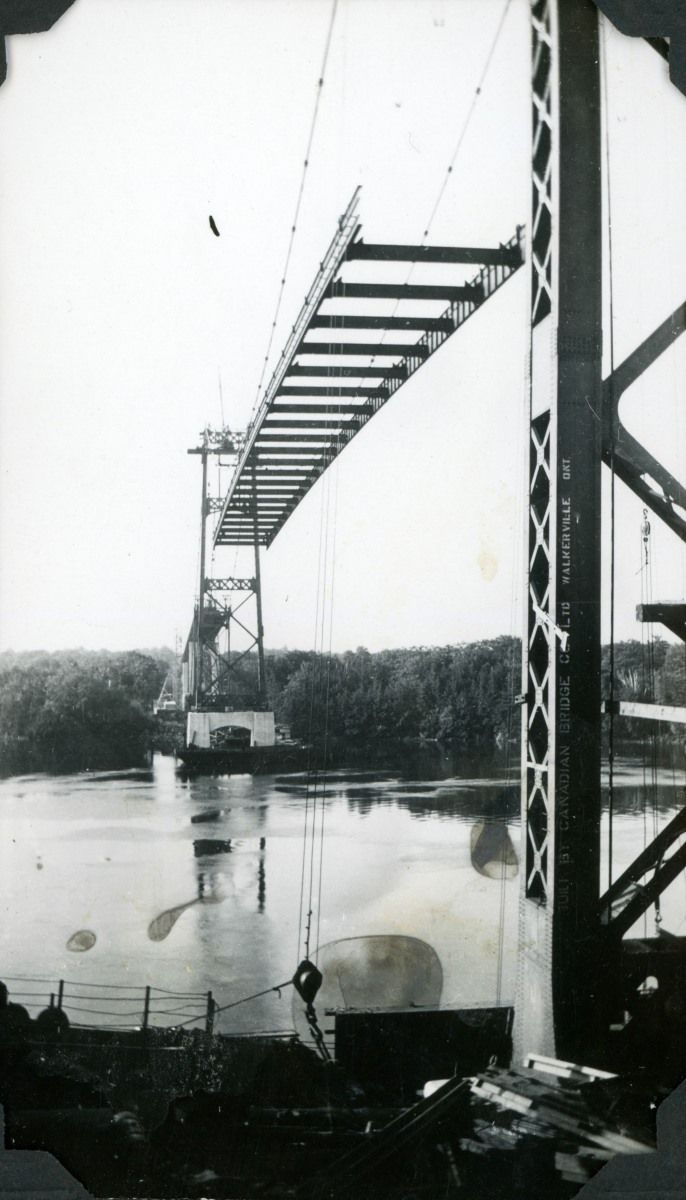
In addition to the images presented here we have documents relating to the Thousand Islands International Bridge Company, excerpts from the diary of a landowner affected by the project and associated court case, memorabilia of the opening ceremony, and some media files of presentations on the bridge.
In particular, we hold a 2004 slide production “The Joining of Ontario and New York” produced by Landon Bay Centre & Frontenac Area Biosphere Region Network (2004). This project identifies local workers: Hilliard Bevins, Roy Bradley, Art Byford, Ernie Green, Boris McAlpin, Ford Peck, Jack Salter, Ken Truesdell & Jack Stratford (foreman for steel company).
First nation Mohawks from Kahnawake, Quebec, were involved in the high steelwork. In a 1999 conversation with John MacLeod, Bevins was quoted as saying: “They can walk a two-inch plank for a mile. Very, very steady.” He indicated that there was no contact with the American crew until you could drive across. Steel was from Hamilton, Ontario. There was only one death on the Canadian side and three on U.S. side.
Images shown here are from the LTI Historical Society Photograph Collection 008 & 013, Diaries of Karl Webster Burns +accrual 2015-030, George Burns 2016-026, Charlie Sykes in Bill Boulton incidentals 2017-005, TI Bridge Souvenir Ribbon 2018-022, and Art Byford Collection 2020-016.

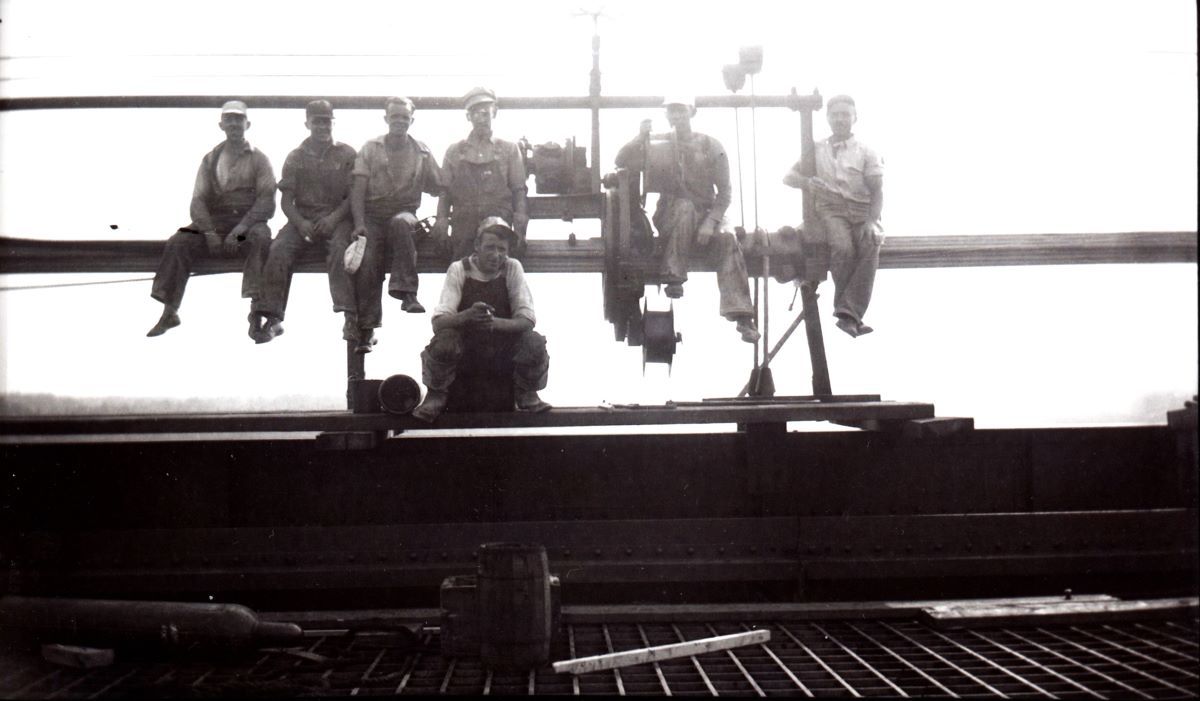
Notes:
ARCHIVES DESCRIPTION https://ltipl.net/archives
CATALOGUE https://ltiarchives.ca
LTI Historical Society https://ltihistoricalsociety.org Newsletter #39, 2013 includes several articles on the bridge.
Collection 2015 KW Burns; 2016 G. Burns; 2017 Mike Sykes; 2018 Souvenir Ribbon; 2020Byford
All photographs courtesy LTI Archives © 2024.
By James Saynor
James Saynor is a volunteer cataloguer for the LTI Archives and does their weekly Facebook post. He maintains websites for LTI Historical Society and Leeds Heritage Network. He is a new member of the township’s Municipal Heritage Committee. A retired elementary school teacher, he started his career in Industrial Arts in London, Ontario but “they got rid of that…”
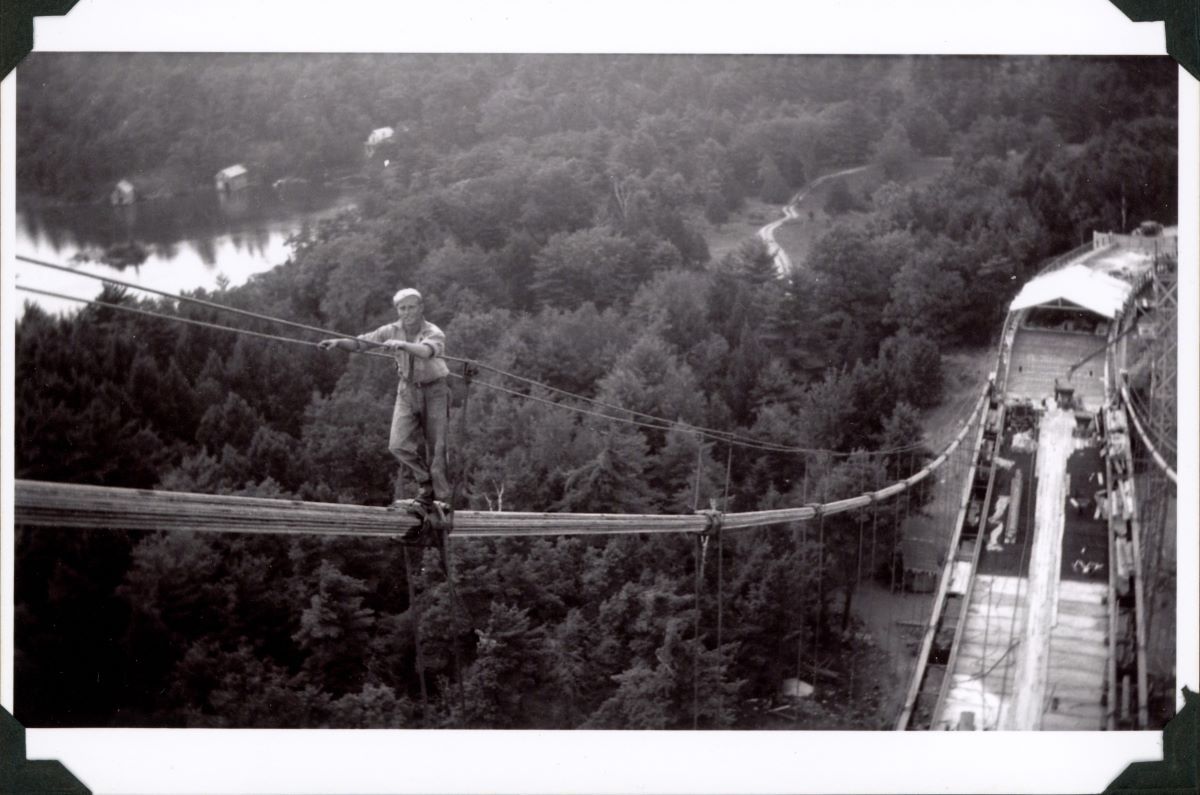
Posted in: Volume 19, Issue 5, May 2024, History, People, Places, Current
Please click here if you are unable to post your comment.
